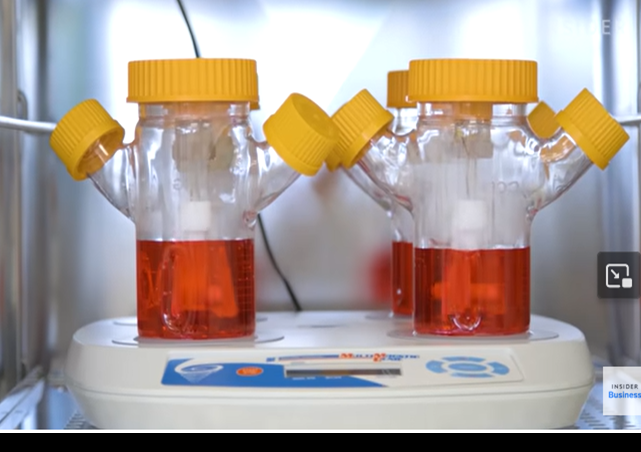Will “Lab Grown Meat” Rebranded as “Cultivated Meat” be an Eco-Business Success?

I have been covering the practicality of marketing meat products grown from laboratory processes, which is being pushed as an alternative to the traditional bovine and poultry protein options that have been deemed “ecocide” by climate change cultists.
This is despite a study concluding that it was up to 25 times worse for the environment than real beef. Despite the potential environmental impacts and lack of technology to safely upscale production to meet consumer needs, the US Department of Agriculture (USDA) has already approved its sale to the public.
Therefore, the introduction to the public of lab-grown meat is being handled similarly to that of green energy technologies.
However, the term “lab-grown meat” seems highly unappetizing, so now it is being rebranded as “cultivated meat.”
The United States is now the second country, after Singapore, to approve the sale of cultivated meat. Cultivated meat is an application of the newest category of animal products: the animal cell itself. Like conventional meat, cultivated meat contains animal muscle, fat, and collagen. This muscle, fat, and collagen, however, are grown directly from animal cells, rather than by raising and slaughtering an animal.While cultivated meat may hold promise for producing more humane and socially sustainable protein, it may also help solve some of the negative environmental impacts of industrial livestock production. Reducing waste from the meat industry is one area where cultivated meat has tremendous potential, according to CE Delft, an independent consultancy firm.
The cultivated meat comes from “cellular agriculture.” Cell Agriculture Day was recently celebrated at Tufts University, complete with an homage to “sustainability” and “stakeholders,” which are also hallmarks of the green energy technology sales pitch.
Less than six months after gaining federal approval for the sale of lab-grown chicken in the U.S., scientists, investors, government leaders, and other key stakeholders convened for Cellular Agriculture Innovation Day 2024 at Tufts University, the second annual conference dedicated to advancing the consumption of cell-cultured meat.The atmosphere at Joyce Cummings Center on January 11 was less focused on celebrating wins, however, than on next steps. The immediate goal, according to industry leaders, must be securing additional funding for food-science research as well as increasing consumer confidence in lab-grown meat products. In the longer term, sustainably building out the infrastructure needed to produce cell-cultured meat on a large scale will be essential….For Sanah Baig, USDA Deputy Under Secretary for Research, Education, and Economics, these aims align well with the Biden administration’s own “bold goals” plan to reduce global methane emissions from food and agriculture by 30 percent within the decade.“Global demand for meat is at an all-time high, and protein production will need to be doubled by 2050,” said Baig during welcoming remarks. “You all understand better than most that we simply cannot meet these needs by maintaining our status quo systems. We will need cellular agriculture driving us forward to develop more novel protein sources that use less of our precious natural resources.”
More rational people recognize that cows are important to “sustainability.”
And, even if you removed all the cows in the United States and Europe, that wouldn’t touch the millions of methane-generating cud chewers in Africa.
Meanwhile, an Israeli company has just received approval from health officials to sell the world’s first steaks made from cultivated beef cells.
Aleph Farms, of Rehovot, Israel, was granted the initial go-ahead by the Israeli Health Ministry in December, the company said in a news release. The move was announced late Wednesday by Israeli Prime Minister Benjamin Netanyahu, who called the development “a global breakthrough.”The firm said it planned to introduce a cultivated “petite steak” to diners in Israel. The beef will be grown from cells derived from a fertilized egg from a Black Angus cow named Lucy living on a California farm.
Researchers are now trying to develop cultivated seafood as well.
Atlantic Fish Co. is in the early stages of production, but aims to create flaky white fish fillets from animal cells to make seafood more sustainable as climate change continues to threaten ocean ecosystems.”It’s much more ethical and has a much lower carbon footprint, while still providing folks with that real authentic seafood that they know and love,” [Doug Grant is the CEO of Atlantic Fish Co.] said.
While I wish every entrepreneur luck in their endeavor, I suspect there will come a time when investors realize that producing a high-quality protein that tastes delicious and in the most energy-efficient manner comes from the traditional methods used by the ranch and dairy industries.
CLICK HERE FOR FULL VERSION OF THIS STORY